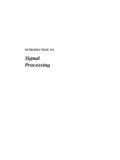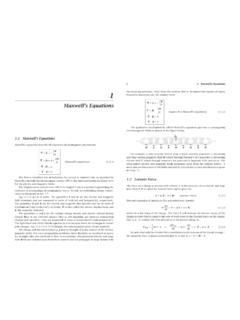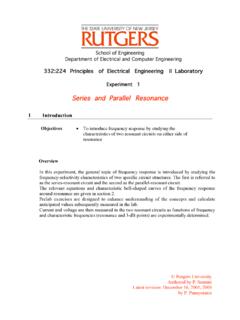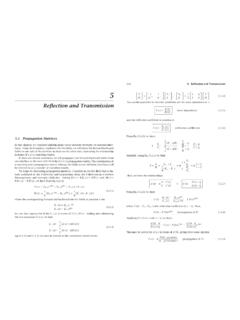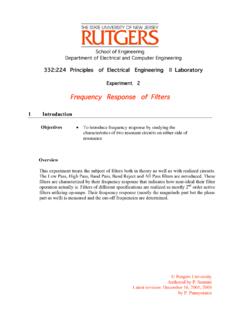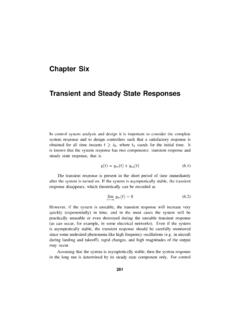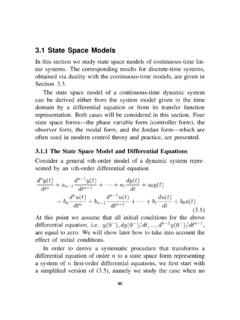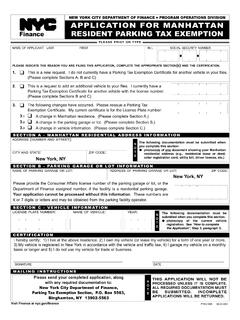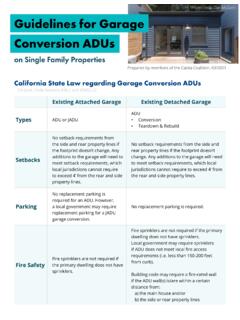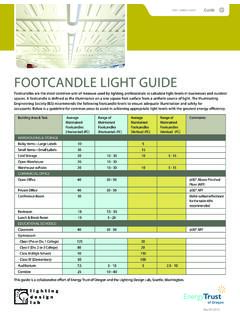Transcription of System Specification and Design: Parking Garage Automation
1 1 System Specification and Design: Parking Garage Automation Matt Edwards, Eric Wasserman, Abdul Hassan, Juan Antialon Group Number 2 Project URL: 2 Effort Estimation The table below is a breakdown of the individual member s contributions to each part of this report. Abdul Matt Eric Juan Summary of Changes (5 points) 100% Customer Statement of Requirements (6 points) 50% 50% Glossary of Terms (4 points) 80% 20% Functional Requirements Specification (37 points) 20% 30% 50% Nonfunctional Requirements (6 points) 80% 20% Domain Analysis (25 points) 50% 50% Interaction Diagrams (30+10 points)
2 100% Class Diagram and Interface Specification (10+10 points) 50% 50% System Architecture and Design (22 points) 40% 60% Algorithms and Data Structures (4 points) 100% User Interface (8 points) 100% History of Work and Current Implementation Status (5 points) 50% 50% Conclusions and Future Work (5 points) 60% 40% 3 References (3 points) 100% Project Management (10 points) 50% 50% Software Coding (?)
3 Points) 100% Total Points Contribution 4 Table of Contents SUMMARY OF CHANGES .. 6 CUSTOMER STATEMENT OF REQUIREMENTS .. 8 STATEMENT OF GOALS .. 8 PROBLEM 8 PROPOSED SOLUTION .. 8 BUSINESS POLICIES .. 12 BUSINESS REQUIREMENTS 15 GLOSSARY OF TERMS .. 21 FUNCTIONAL REQUIREMENTS Specification .. 23 STAKEHOLDERS .. 23 ACTORS AND GOALS .. 23 USE CASES .. 24 Casual Description of Use Cases .. 24 Fully Dressed Description of Use Cases .. 28 Use Case Diagram .. 39 System Requirements Use Case Traceability Matrix .. 40 System SEQUENCE DIAGRAMS .. 43 NON FUNCTIONAL REQUIREMENTS .. 47 EFFORT ESTIMATION USING USE CASE POINTS .. 48 DOMAIN ANALYSIS.
4 53 DOMAIN MODELS .. 53 Domain Model for UC 2 .. 53 Domain Model for Remaining Use Cases .. 57 System OPERATION CONTRACTS .. 61 MATHEMATICAL MODELS .. 61 INTERACTION DIAGRAMS .. 62 THEORETICAL INTERACTION DIAGRAMS .. 62 IMPLEMENTED INTERACTION DIAGRAMS .. 63 NOTES AND CONVENTIONS .. 65 UC 1: RESERVE .. 66 UC 2: PARK .. 68 UC 3: MANAGE ACCOUNT .. 73 UC 4: VIEW RESERVATIONS .. 75 UC 5: REGISTER .. 77 UC 6: MANAGE Garage .. 79 UC 7: EDIT RESERVATION .. 81 UC 8: REGISTER VEHICLE .. 83 UC 9: EDIT VEHICLE .. 85 5 UC 10: AUTHENTICATE USER .. 87 UC 11: SET PRICES .. 89 UC 12: INSPECT USAGE HISTORY .. 91 UC 13: MONTHLY BILLING .. 93 CLASS DIAGRAM AND INTERFACE Specification .. 95 CLASS DIAGRAMS.
5 95 DATA TYPES AND OPERATION SIGNATURES .. 99 DESIGN PATTERNS .. 102 OBJECT CONSTRAINT LANGUAGE (OCL) CONTRACTS .. 103 System ARCHITECTURE AND System DESIGN .. 106 ARCHITECTURAL STYLES .. 106 IDENTIFYING SUBSYSTEMS .. 107 MAPPING SUBSYSTEMS TO HARDWARE .. 110 PERSISTENT DATA STORAGE .. 110 NETWORK PROTOCOL .. 122 GLOBAL CONTROL FLOW .. 122 HARDWARE REQUIREMENTS .. 122 DATA STRUCTURES AND ALGORITHMS .. 124 DATA STRUCTURES .. 124 ALGORITHMS .. 125 USER INTERFACE DESIGN AND IMPLEMENTATION .. 131 HISTORY OF WORK AND CURRENT IMPLEMENTATION STATUS .. 140 CONCLUSION AND FUTURE WORK .. 142 DIRECTED ADVERTISING FOR ONLINE RESERVATIONS .. 143 MULTIPLE Garage INTEGRATION .. 144 CUSTOMER PARKS IN UNASSIGNED SPOT.
6 145 NEW SENSORS THAT TRACK VEHICLES .. 146 DISPLAY INTERACTIVE Garage MAP .. 146 CODE APPENDIX .. 148 REFERENCES .. 159 6 Summary of Changes Since this report is a collation of our first and second reports with revisions included, here we specify the major changes we have made between the first, second, and third reports. First Report - Third Report Section List of ChangesCustomer Statement of Requirements Revised Problem and Solution to make it clearer; Updated Business Policies to more accurately reflect goals of Park-A-Lot; Simplified Business Requirements table, split up complex requirements into simpler ones, and added a few new ones towards the end; Added Prices and Fees section to explicitly show penalty fees.
7 Use Case Descriptions UC-2 Park was expanded to include the case of a customer arriving early; Modified UC-4 to View Reservations; UC-7, 8 and 9 were all added; UC-13 MonthlyBilling was added to handle monthly billing of registered customers. Use Cases (Fully Dressed) Same modifications as above, most notably expanding UC-2 Park. User Interface Design Included screenshots and navigation paths for newly designed and updated user interface. Second Report - Third Report Section List of Changes Interaction Diagrams Added new section, Theoretical Diagrams, to better explain what happened with UC-2 Park, why we did not implement it, and what could be done with it in the future; For the remaining interaction diagrams, included info about how Model-View-Controller architecture ensures all design principles to a high level; Updated UC-2 Park and UC-10 Authenticate with design patterns; Added new use cases from modified Report 1.
8 Class Diagram Updated class diagram to include new classes added 7 since last iteration; Data Types and Op Sigs updated to include changes to code since last iteration; Included short section on Design Patterns and how they influence our class diagram; Added OCL section. Data Structures and Algorithms Included Parking lot bitmap data structure; Included algorithm for scheduling reservations using swapping; Included algorithm for determining best alternative reservation; Included algorithm for determining discount pricing. User Interface Implementation Combined this with UI design from Report 1 into one large section. Code Appendix Added an appendix for C++ code of reservation swapping algorithm.
9 8 Customer Statement of Requirements Statement of Goals The main goals of this software development project is to maximize the occupancy and revenue of a Parking Garage and develop a user-friendly mechanism that helps customers find and reserve available Parking in the Garage , either in advance or at the time of Parking . Problem Statement The problems that are faced is as follows: Our customer owns a Parking Garage that lacks a computerized System for handling the logistics of Parking vehicles efficiently, thus he/she is currently losing profit because of the lost opportunity of not maximizing the available Parking spaces. At times of peak Parking in the area, the Garage may not be filled to maximum capacity since there are only primitive ways to indicate to customers that spots are available inside.
10 Second, there may be a congestion problem inside the Garage since customers might search for an available spot when no spots are actually open. This congestion would decrease repeat business, because no customer likes working with an inefficient System . Finally, some customers may be discouraged by the possibility that driving to an area would inconvenience them if no Parking were to be available. Since the Garage has no way to signal to customers remotely to their homes that Parking is available in a certain Garage at a certain time, those customers that choose to stay at home rather than risk-it are lost sources of revenue. Proposed Solution In order to increase profits and reduce personnel costs a computerized System will be put into place to address all three problems suggested above.
